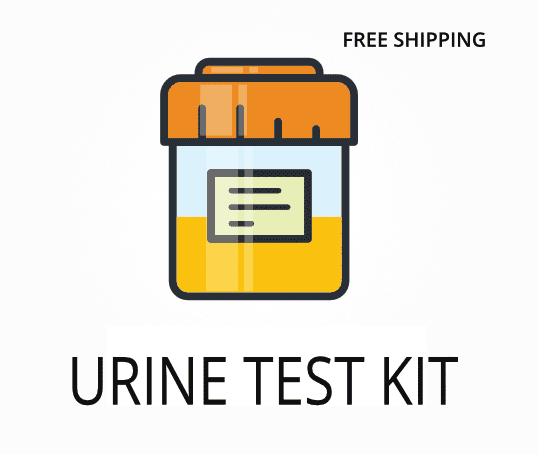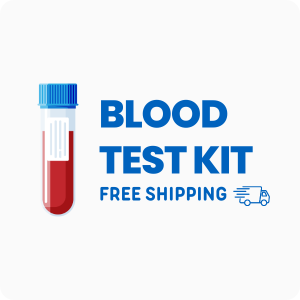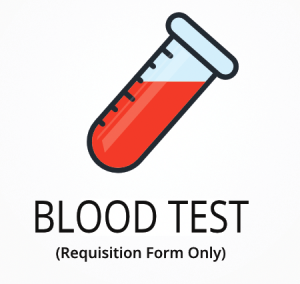Ordering the Total Tox Burden Test
The Total Tox Burden Test from Vibrant Wellness helps identify the presence of heavy metals, mold toxins, and environmental chemicals in your body. This test is especially useful for those who have unexplained symptoms that may be linked to toxin exposure, such as fatigue, headaches, or skin rashes. Interestingly, some toxins can build up in the body over time without causing immediate symptoms, making it possible to have a significant toxic load even if you feel fine day-to-day.
Ordering this test provides a clear picture of your exposure to a wide range of toxins. When you order, you can expect these specific benefits:
- Detects exposure to multiple types of mold toxins, heavy metals, and environmental chemicals in one test
- Helps identify hidden sources of symptoms like brain fog, joint pain, or hormonal changes
- Supports targeted detoxification plans based on your unique toxin profile
- Monitors the effectiveness of detox or avoidance strategies over time
- Offers a non-invasive, at-home urine collection for convenience and privacy
Who Should Consider Environmental and Toxin Exposure Testing
People who have been feeling tired, foggy, or achy for weeks without a clear reason may benefit from this test, especially if they have a history of living in older buildings, working with chemicals, or living in areas with poor air quality. For example, someone who recently moved into a home with a musty smell and started experiencing headaches and skin irritation could use this test to check for hidden mold or chemical exposure.
Ordering this test may also be helpful in these situations:
- Persistent digestive issues after moving to a new area
- Unexplained joint pain following a renovation or construction project
- Memory problems after working in an environment with chemical fumes
- Respiratory symptoms that do not improve with standard treatments
- People who notice increased sensitivity to fragrances or cleaning products after a water leak in their home
Testing for toxins can help pinpoint the source of symptoms like fatigue, headaches, or hormonal changes by measuring specific chemicals and metals in your body. Delaying this test may allow toxins to continue building up, which can make symptoms harder to manage and slow down recovery.
How to Prepare for Toxin and Heavy Metal Screening
Fasting is not required for this test, but it is best to collect your first-morning urine sample before eating or drinking. Always follow any instructions your doctor or healthcare provider gives you to make sure your sample is collected correctly and your results are as useful as possible.
Labs Included When Ordering Your Lab Test
Heavy Metals
| Test Name | Reference Range | Significance | High Levels Mean |
|---|---|---|---|
| Aluminum | <7 | Aluminum is a metal found in the environment and used in many products. Elevated levels can affect the nervous system and bone health. | High levels may indicate excessive exposure or impaired kidney function. |
| Antimony | <1 | Antimony is used in flame retardants and batteries. Chronic exposure can affect the lungs, heart, and gastrointestinal system. | High levels suggest environmental or occupational exposure. |
| Arsenic | <35 | Arsenic is a toxic element found in water, food, and industrial sources. It can cause skin, cardiovascular, and neurological problems. | High levels indicate recent exposure to arsenic, often from contaminated water or food. |
| Barium | <7 | Barium is used in manufacturing and medical imaging. Excessive exposure can affect the heart, blood pressure, and nervous system. | High levels may reflect environmental or occupational exposure. |
| Beryllium | <0.1 | Beryllium is used in aerospace and electronics. Chronic exposure can cause lung disease and immune reactions. | High levels suggest inhalation or occupational exposure. |
| Bismuth | <0.5 | Bismuth is found in some medications and cosmetics. High levels can cause kidney and neurological issues. | High levels may result from overuse of bismuth-containing products. |
| Cadmium | <1 | Cadmium is a toxic metal found in batteries and tobacco smoke. It can damage kidneys, bones, and the lungs. | High levels indicate exposure from smoking, food, or industrial sources. |
| Cesium | <5 | Cesium is a naturally occurring element and used in industry. High levels can affect the heart and nervous system. | High levels may indicate environmental or accidental exposure. |
| Gadolinium | <0.5 | Gadolinium is used in MRI contrast agents. Retention in the body can cause skin and organ issues, especially in kidney disease. | High levels may result from recent MRI with contrast or impaired excretion. |
| Lead | <5 | Lead is a highly toxic metal affecting the brain, kidneys, and blood. Even low levels can impair development in children. | High levels indicate exposure from old paint, water, or contaminated soil. |
| Mercury | <10 | Mercury is found in fish, dental fillings, and industry. It can damage the nervous system, especially in children and pregnant women. | High levels suggest exposure from seafood, dental, or industrial sources. |
| Nickel | <2 | Nickel is used in alloys and batteries. Excessive exposure can cause allergic reactions and respiratory issues. | High levels may result from occupational or environmental exposure. |
| Palladium | <0.5 | Palladium is used in electronics and dental materials. High levels can cause allergic reactions and kidney issues. | High levels indicate exposure from dental or industrial sources. |
| Platinum | <0.5 | Platinum is used in jewelry, chemotherapy, and industry. It can cause allergic reactions and kidney problems. | High levels may result from medical or occupational exposure. |
| Tellurium | <0.5 | Tellurium is used in electronics and metallurgy. High levels can cause gastrointestinal and neurological symptoms. | High levels suggest environmental or occupational exposure. |
| Thallium | <0.5 | Thallium is a highly toxic metal used in electronics and pesticides. It can cause nerve, skin, and hair problems. | High levels indicate toxic exposure, often accidental or criminal. |
| Thorium | <0.1 | Thorium is a radioactive metal used in industry. Chronic exposure can increase cancer risk and cause organ damage. | High levels suggest environmental or occupational exposure. |
| Tin | <5 | Tin is used in cans and alloys. High levels can cause gastrointestinal and neurological symptoms. | High levels may result from contaminated food or occupational exposure. |
| Tungsten | <1 | Tungsten is used in light bulbs and tools. Excessive exposure can affect the kidneys and lungs. | High levels indicate environmental or occupational exposure. |
| Uranium | <0.05 | Uranium is a radioactive element found in soil and water. High levels can damage the kidneys and increase cancer risk. | High levels suggest environmental or accidental exposure. |
Mycotoxins
| Test Name | Reference Range | Significance | High Levels Mean |
|---|---|---|---|
| Aflatoxin M1 | <0.5 | Aflatoxin M1 is a metabolite of aflatoxin B1, found in milk and dairy. It is a potent carcinogen and can damage the liver. | High levels indicate exposure to aflatoxin-contaminated foods. |
| Aflatoxin B1 | <0.5 | Aflatoxin B1 is a highly toxic mold toxin found in grains and nuts. It is strongly linked to liver cancer and immune suppression. | High levels suggest significant dietary exposure to contaminated foods. |
| Aflatoxin B2 | <0.5 | Aflatoxin B2 is a less potent but still toxic aflatoxin. It can contribute to liver damage and cancer risk. | High levels indicate exposure to moldy foods. |
| Aflatoxin G1 | <0.5 | Aflatoxin G1 is another aflatoxin variant found in contaminated grains. It can cause liver toxicity and increase cancer risk. | High levels reflect exposure to aflatoxin-producing molds. |
| Aflatoxin G2 | <0.5 | Aflatoxin G2 is a minor aflatoxin with similar toxic effects. It can contribute to cumulative liver damage. | High levels suggest ongoing exposure to contaminated foods. |
| Sterigmatocystin | <1 | Sterigmatocystin is a precursor to aflatoxins and is also carcinogenic. It is found in moldy grains and can damage the liver. | High levels indicate exposure to certain molds in food or environment. |
| Zearalenone | <2 | Zearalenone is a mycotoxin with estrogen-like effects, found in grains. It can disrupt hormones and reproductive health. | High levels suggest exposure to contaminated cereals or grains. |
| Fumonisin B1 | <2 | Fumonisin B1 is a toxin from Fusarium molds in corn. It can cause liver and kidney damage and increase cancer risk. | High levels indicate significant exposure to contaminated corn products. |
| Fumonisin B2 | <2 | Fumonisin B2 is a related toxin with similar effects as B1. It can harm the liver, kidneys, and nervous system. | High levels reflect exposure to Fusarium-contaminated foods. |
| Fumonisin B3 | <2 | Fumonisin B3 is another Fusarium toxin found in corn. It can contribute to organ toxicity and cancer risk. | High levels suggest dietary exposure to contaminated grains. |
| Citrinin | <1 | Citrinin is a mycotoxin from Penicillium and Aspergillus molds. It can damage the kidneys and impair immune function. | High levels indicate exposure to moldy foods or supplements. |
| Mycophenolic Acid | <1 | Mycophenolic acid is produced by Penicillium molds and used as an immunosuppressant drug. Environmental exposure can suppress immunity. | High levels may reflect environmental or pharmaceutical exposure. |
| Roridin E | <0.5 | Roridin E is a macrocyclic trichothecene mycotoxin. It can cause severe immune suppression and cell damage. | High levels indicate exposure to toxic black mold. |
| Enniatin B1 | <1 | Enniatin B1 is a Fusarium mycotoxin found in grains. It can disrupt cell membranes and affect immune function. | High levels suggest dietary exposure to contaminated grains. |
| Verrucarin A | <0.5 | Verrucarin A is a potent trichothecene mycotoxin. It can cause severe toxicity, including immune and organ damage. | High levels indicate exposure to toxic molds in the environment. |
| Verrucarin J | <0.5 | Verrucarin J is a related trichothecene mycotoxin. It can cause cell damage and immune suppression. | High levels suggest exposure to water-damaged buildings or moldy foods. |
| Deoxynivalenol (DON) | <2 | Deoxynivalenol, or vomitoxin, is a Fusarium toxin in grains. It can cause nausea, immune suppression, and growth issues. | High levels indicate significant exposure to contaminated cereals. |
| Nivalenol (NIV) | <1 | Nivalenol is a trichothecene mycotoxin found in grains. It can cause immune suppression and gastrointestinal symptoms. | High levels reflect exposure to Fusarium-contaminated foods. |
| Diacetoxyscirpenol (DAS) | <0.5 | DAS is a trichothecene mycotoxin from Fusarium molds. It can cause cell damage, immune suppression, and toxicity. | High levels suggest exposure to contaminated grains or moldy environments. |
| T-2 Toxin | <0.5 | T-2 toxin is a highly toxic trichothecene mycotoxin. It can cause severe immune suppression and organ damage. | High levels indicate exposure to toxic black mold or contaminated grains. |
| Satratoxin G | <0.5 | Satratoxin G is a macrocyclic trichothecene from Stachybotrys mold. It can cause severe respiratory and immune issues. | High levels suggest exposure to water-damaged buildings. |
| Satratoxin H | <0.5 | Satratoxin H is a related trichothecene mycotoxin. It can cause cell death, immune suppression, and respiratory symptoms. | High levels indicate exposure to toxic mold in the environment. |
| Roridin A | <0.5 | Roridin A is a macrocyclic trichothecene mycotoxin. It can cause severe toxicity and immune suppression. | High levels suggest exposure to black mold or contaminated environments. |
| Roridin L-2 | <0.5 | Roridin L-2 is a trichothecene mycotoxin. It can cause cell damage and immune dysfunction. | High levels indicate exposure to toxic molds. |
| Ochratoxin A | <2 | Ochratoxin A is a mycotoxin from Aspergillus and Penicillium. It can damage the kidneys and increase cancer risk. | High levels reflect exposure to contaminated grains, coffee, or wine. |
| Patulin | <1 | Patulin is a mycotoxin found in moldy fruits, especially apples. It can cause gastrointestinal and immune issues. | High levels indicate exposure to moldy fruit products. |
| Dihydrocitrinone | <1 | Dihydrocitrinone is a metabolite of citrinin. It can indicate exposure to nephrotoxic mycotoxins from food or supplements. | High levels suggest recent exposure to citrinin-producing molds. |
| Gliotoxin | <1 | Gliotoxin is produced by Aspergillus and other molds. It can suppress the immune system and cause cell damage. | High levels indicate exposure to moldy environments or foods. |
| Chaetoglobosin A | <0.5 | Chaetoglobosin A is a mycotoxin from Chaetomium molds. It can disrupt cell division and cause toxicity. | High levels suggest exposure to water-damaged buildings or moldy foods. |
Environmental Chemicals
| Test Name | Reference Range | Significance | High Levels Mean |
|---|---|---|---|
| Pesticides & Herbicides | |||
| 2,4-Dichlorophenoxyacetic Acid (2,4-D) | <2 | 2,4-D is a common herbicide used in agriculture and lawns. It can disrupt hormones and affect the nervous system. | High levels indicate recent exposure to herbicides. |
| Perchlorate | <5 | Perchlorate is used in rocket fuel and explosives. It can disrupt thyroid function by interfering with iodine uptake. | High levels suggest environmental or occupational exposure. |
| 2,2-bis(4-Chlorophenyl)acetic Acid (DDA) | <1 | DDA is a breakdown product of DDT, a banned pesticide. It can persist in the environment and accumulate in fat tissue. | High levels indicate past or ongoing exposure to DDT. |
| Diethyldithiophosphate (DEDTP) | <10 | DEDTP is a metabolite of organophosphate pesticides. It can affect the nervous system and disrupt enzymes. | High levels reflect recent exposure to organophosphate pesticides. |
| Dimethyldithiophosphate (DMDTP) | <10 | DMDTP is another organophosphate pesticide metabolite. It can impair nerve function and enzyme activity. | High levels indicate recent pesticide exposure. |
| Diethylthiophosphate (DETP) | <10 | DETP is a breakdown product of organophosphate pesticides. It can disrupt nervous system function. | High levels suggest recent exposure to these pesticides. |
| Dimethylphosphate (DMP) | <10 | DMP is a metabolite of organophosphate pesticides. It can affect the nervous system and enzyme activity. | High levels reflect recent pesticide exposure. |
| Diethylphosphate (DEP) | <10 | DEP is a common organophosphate pesticide metabolite. It can impair nerve function and disrupt enzymes. | High levels indicate recent exposure to organophosphates. |
| Dimethylthiophosphate (DMTP) | <10 | DMTP is a metabolite of organophosphate pesticides. It can affect the nervous system and enzyme activity. | High levels suggest recent pesticide exposure. |
| Atrazine | <1 | Atrazine is a widely used herbicide. It can disrupt hormones and may affect reproductive health. | High levels indicate recent exposure to atrazine. |
| Atrazine Mercapturate | <1 | Atrazine mercapturate is a metabolite of atrazine. It reflects recent exposure to this herbicide. | High levels suggest recent atrazine exposure. |
| Glyphosate | <1 | Glyphosate is a common herbicide used on crops. It may disrupt gut bacteria and has been linked to health concerns. | High levels indicate recent exposure to glyphosate-containing products. |
| 3-Phenoxybenzoic Acid (3PBA) | <2 | 3PBA is a metabolite of pyrethroid insecticides. It can affect the nervous system and hormone balance. | High levels reflect recent exposure to pyrethroid insecticides. |
| Plasticizers & Parabens | |||
| Monoethyl Phthalate (MEP) | <50 | MEP is a metabolite of diethyl phthalate, used in plastics and personal care products. It can disrupt hormones and reproductive health. | High levels indicate exposure to phthalate-containing products. |
| Mono-2-ethylhexyl Phthalate (MEHP) | <10 | MEHP is a metabolite of DEHP, a common plasticizer. It can disrupt hormones and affect reproductive health. | High levels suggest exposure to DEHP-containing plastics. |
| Mono-(2-ethyl-5-hydroxyhexyl) Phthalate (MEHHP) | <20 | MEHHP is a metabolite of DEHP. It can disrupt endocrine function and reproductive health. | High levels indicate exposure to phthalate-containing plastics. |
| Mono-(2-ethyl-5-oxohexyl) Phthalate (MEOHP) | <20 | MEOHP is another DEHP metabolite. It can affect hormone balance and reproductive health. | High levels suggest exposure to DEHP-containing products. |
| Mono-ethyl Phthalate (MEtP) | <50 | MEtP is a phthalate metabolite found in plastics and cosmetics. It can disrupt hormones and reproductive function. | High levels indicate exposure to phthalate-containing products. |
| Methylparaben | <100 | Methylparaben is a preservative in cosmetics and foods. It can mimic estrogen and disrupt hormone balance. | High levels suggest exposure to paraben-containing products. |
| Propylparaben | <30 | Propylparaben is a common preservative in personal care products. It can disrupt hormones and reproductive health. | High levels indicate exposure to paraben-containing products. |
| Butylparaben | <1 | Butylparaben is a less common paraben used in cosmetics. It can disrupt hormone function and reproductive health. | High levels suggest exposure to paraben-containing products. |
| Ethylparaben | <10 | Ethylparaben is a preservative in cosmetics and foods. It can mimic estrogen and disrupt hormone balance. | High levels indicate exposure to paraben-containing products. |
| Other Environmental Chemicals | |||
| N-acetyl-S-(2-carbamoylethyl)-cysteine (NAE) | <10 | NAE is a metabolite of acrylamide, found in fried foods and tobacco smoke. It can be neurotoxic and increase cancer risk. | High levels indicate exposure to acrylamide from food or smoke. |
| N-Acetyl (2-Cyanoethyl) Cysteine (NACE) | <10 | NACE is a metabolite of acrylonitrile, used in plastics and textiles. It can be toxic to the nervous system and liver. | High levels suggest exposure to acrylonitrile-containing products. |
| N-Acetyl (2-Hydroxypropyl) Cysteine (NAHP) | <10 | NAHP is a metabolite of propylene oxide, used in plastics and fumigants. It can be toxic to the nervous system. | High levels indicate exposure to propylene oxide. |
| N-Acetyl (3,4-Dihydroxybutyl) Cysteine (NADB) | <10 | NADB is a metabolite of 1,3-butadiene, used in rubber and plastics. It is a known carcinogen and can damage DNA. | High levels suggest exposure to 1,3-butadiene. |
| 2-Hydroxyethyl Mercapturic Acid (HEMA) | <10 | HEMA is a metabolite of ethylene oxide, used in sterilization and industry. It can be toxic to the nervous system and is a carcinogen. | High levels indicate exposure to ethylene oxide. |
| N-Acetyl Propyl Cysteine (NAPR) | <10 | NAPR is a metabolite of propylene, used in plastics and fuels. It can be toxic to the nervous system and liver. | High levels suggest exposure to propylene-containing products. |
| Diphenyl Phosphate (DPP) | <10 | DPP is a metabolite of flame retardants and plasticizers. It can disrupt hormones and affect the nervous system. | High levels indicate exposure to flame retardants or plastics. |
| Tiglylglycine (TG) | <10 | TG is a marker of mitochondrial dysfunction and organic acid metabolism. Elevated levels can indicate metabolic stress. | High levels suggest mitochondrial dysfunction or metabolic issues. |
| Bisphenol A (BPA) | <2 | BPA is a chemical in plastics and food can linings. It can disrupt hormones and is linked to reproductive and metabolic issues. | High levels indicate exposure to BPA-containing products. |
| Triclosan | <1 | Triclosan is an antimicrobial in soaps and toothpaste. It can disrupt hormones and contribute to antibiotic resistance. | High levels suggest exposure to triclosan-containing products. |
| 4-Nonylphenol | <1 | 4-Nonylphenol is used in detergents and plastics. It can disrupt hormones and affect reproductive health. | High levels indicate exposure to nonylphenol-containing products. |
| 2-Methylhippuric Acid (2MHA) | <10 | 2MHA is a metabolite of xylene, a solvent in paints and fuels. It can affect the nervous system and liver. | High levels suggest exposure to xylene. |
| 3-Methylhippuric Acid (3MHA) | <10 | 3MHA is another xylene metabolite. It can cause neurological and liver effects with high exposure. | High levels indicate exposure to xylene-containing products. |
| 4-Methylhippuric Acid (4MHA) | <10 | 4MHA is a xylene metabolite found in urine after exposure. It can affect the nervous system and liver. | High levels suggest recent xylene exposure. |
| 2-Hydroxyisobutyric Acid (2HIB) | <10 | 2HIB is a metabolite of gasoline additives and solvents. It can indicate exposure to environmental pollutants. | High levels reflect exposure to gasoline or solvents. |
| Phenylglyoxylic Acid (PGO) | <10 | PGO is a metabolite of styrene, used in plastics and rubber. It can be toxic to the nervous system and liver. | High levels indicate exposure to styrene-containing products. |
| N-acetyl phenyl cysteine (NAP) | <10 | NAP is a metabolite of benzene, a solvent and fuel component. It is a known carcinogen and can damage bone marrow. | High levels suggest exposure to benzene. |
Reference ranges may change slightly as labs update their methods and guidelines.
Total Tox Burden Test FAQ
Is there Total Tox Burden Test testing near me?
This is a home collection kit, so you can collect your urine sample locally and send it to the lab using the included shipping materials. If you have symptoms like brain fog or unexplained fatigue, being able to collect your sample at home makes it easier to get tested without needing to travel or wait for an appointment.
How do I interpret the test results?
While your treating physician should review your results, you can also schedule a one-on-one test results review with our clinical team for a detailed explanation and next steps.
What is the cost of the test?
The price you see includes standard shipping to your address and return shipping to the lab, but draw fees may apply if you need a blood draw for other tests. Ordering this test can help you find out if toxins are contributing to symptoms like headaches or skin rashes, so you can start addressing the cause sooner.
How often should I retest?
Retesting is usually recommended every 6 to 12 months, especially if you are working on reducing toxin exposure or following a detox plan. Regular testing helps track your progress and shows if your toxin levels are going down over time.
How accurate is the test?
This test uses advanced liquid chromatography-tandem mass spectrometry (LC-MS/MS) to measure toxins in urine, with a specificity of 98% and sensitivity of 97%. TrueHealthLabs.com partners with CLIA-certified and CAP-certified laboratories to uphold rigorous testing standards for dependable results.
Important Notes
- The lab recommends collecting the first-morning urine upon awakening, prior to eating or drinking.
- Consult with your primary healthcare provider about discontinuing medications or dietary supplements.
Medical Review Board
Reviewed by Jeff Donohue M.D. from Body Logic and Brady Hurst DC, CCCN. Written by True Health Lab’s team of editorial health contributors.
Disclaimer: This information is for educational purposes only and not intended as medical advice. Consult your healthcare provider for personalized guidance.
Why Customers Trust True Health Labs – What People are saying
Also rated 4.6 out of 5 based on 3452 ShopperApproved reviews- See all TrueHealthLabs.com reviews.








